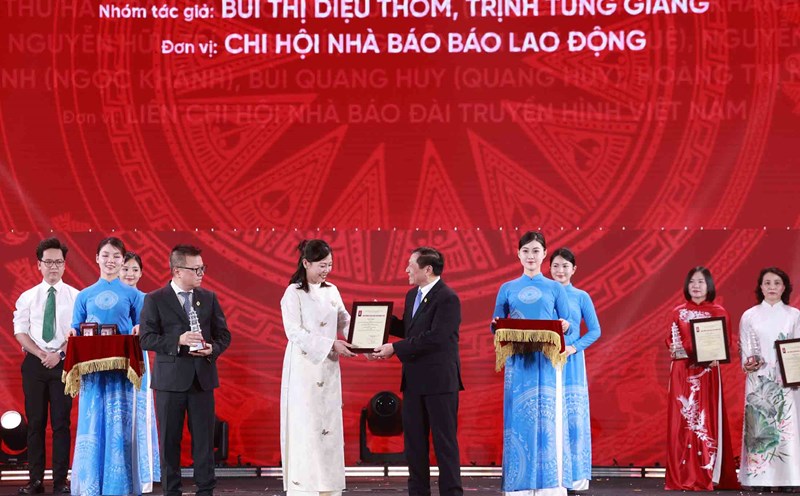Are cultural and artistic journalists really lazy?
When mentioning reporters in the fields of culture and arts, many people think that this field is gentle or extremely inferior to reporters working in law, society, news... Because in everyone's image, journalism in the field of arts is closely associated with watching movies, listening to music, reading books, meeting and interviewing artists.
Sometimes they are invited to "immediate" events to attend press conferences, not to rain or shine on stage, to participate in investigations like other reporters... However, to be honest, for a culture and artisan like me, there are unique difficulties and commitments in his own profession.
Working in the cultural and artistic fields and more specifically working directly with artists, the biggest difficulty is creating relationships and leading stories so that they can confidently express their feelings in each interview.
Many reporters in the cultural and artistic field have confided that when they first entered the profession, they were repeatedly refused interviews by artists because they were not reliable and professional. Even I, who have experience in the profession, sometimes encounter similar cases.
Behind each published article, to readers, is the diligent and quiet working process of reporters. Sometimes an article can be written with a few hundred words, but to get personal information, it sometimes takes me many days to convince the character and choose the most appropriate exploitation and treatment for my article.
It can be said that working in the cultural and artistic sector, on the outside, it can be seen that I in particular and journalists in the same sector in general are favored at big music nights, are given a preview of good films... but in parallel with that privilege, we race with newspapers to provide information as soon as possible.
For reporters in the cultural and artistic field, going to work in the evening is very common, sometimes after events, they return home almost midnight. Many times, I see my colleagues and I sit down to write articles right after the film is released, or after a show to be printed in the newspaper the next morning. Or sit down on stage to watch the show and make online reports of important events.
But along with those concerns, it is the joy of seeing my articles published in newspapers. In particular, the greatest joy is accumulating a good grasp of culture and art and having the opportunity to talk with many artists to better understand the characters from movies to life. From there, he accumulated knowledge for himself.
Every artist has stories and lessons behind the meeting
Culture and art are always a good aspect of journalism. This is also a field that many readers love. Young people are always interested in how their idols live, what awards they receive... Older people are interested in festivals, behavioral culture, cultural stories, books, paintings, and paintings.
The field of culture and arts is a field that combines a lot of knowledge, requiring reporters to not only be good at words but also have experience and improve a lot of knowledge.
And on my career, each character has left me with many meaningful lessons in life. I remember a time when I talked with actor Mai Son Lam - a star who often acted in revolutionary films. He told me a lot about the process of acting in revolutionary films and the injuries on set.
When I asked him why he did not switch to acting in another film or another profession to be more extreme, he only replied: "Once you are in love and passionate about the profession, you will try to overcome any difficulties. Just like with journalism, there is a lot of pressure, always racing against time, but you still stick to it, is it all because of your love for the job? ".
The conversation with actor Mai Son Lam gave me a lot of motivation in life, in my career and in the desires I pursue.
Meanwhile, in a conversation with artist Hong Sap - a female artist who is in her "U90s" and has a hard life, working in all jobs to make a living. When talking with her, I understood more about determination in life, constantly striving and not giving up. She told me about her career journey. In it, she said: "Although life is difficult, every time an artist is sick or dies, I arrange to visit and give a farewell as a way to say goodbye to them". With artist Hong Sap, after conversations with her, I saw her as someone who lived affectionately and knew how to behave with those around her.
And there are many other stories for young artists and even famous stars. In which, I once had a conversation with People's Artist Minh Vuong. I remember at that time, he was very afraid of interviewing the press because he was afraid of making mistakes and getting caught up in unwanted statements. However, at that time, I still persevered to convince and explain so that People's Artist Minh Vuong could understand and be more comfortable with my conversation.
After so many years of working as a journalist and taking charge of the cultural and artistic fields, after all the meetings with artists, the interviews written or the articles about the cultural and artistic stories published, the final core of a journalist like me is just to be able to contribute a voice for better and more positive values, not just to constantly chase after unnecessary noise and drama.












